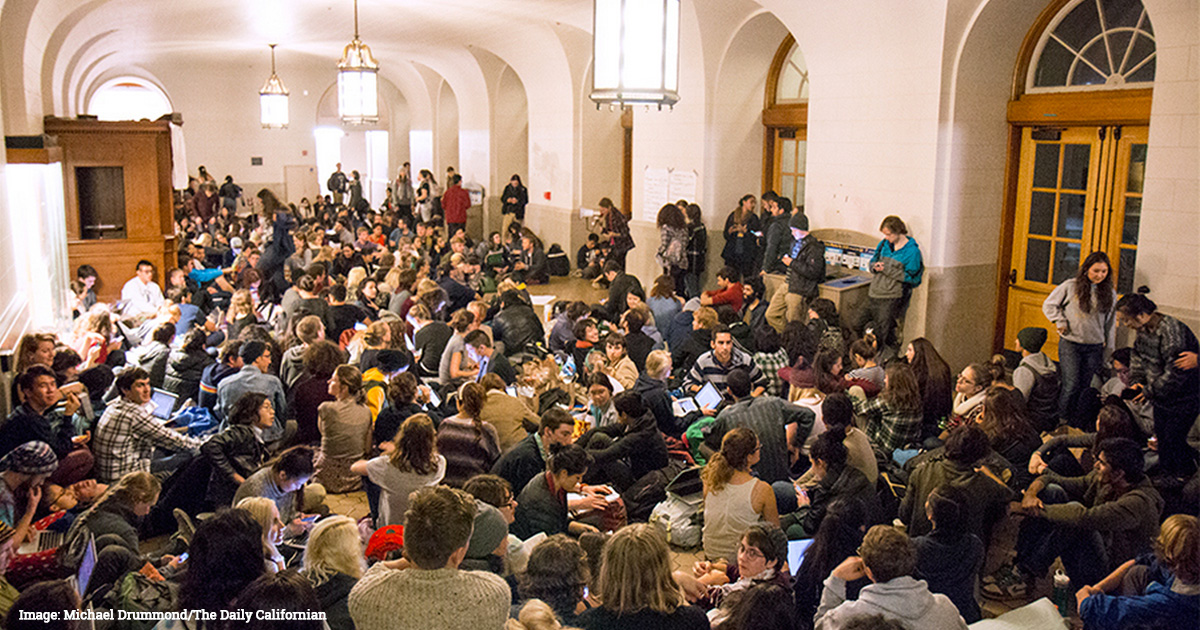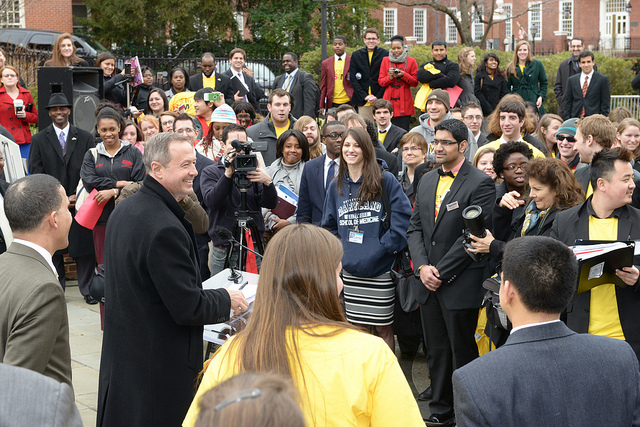Here's the Quiet Reason College has Gotten So Expensive
By:
The latest news out of Madison isn’t good for students at Wisconsin’s public universities: Gov. Scott Walker announced a plan this week to cut $300 million in state funding for the publicly funded UW system over two years.
State revenues have been set back by both the recent recession and by a deep tax cut that has not produced the economic growth its proponents expected, leaving Walker no choice but to make drastic cuts to state services in an attempt to balance the budget in advance of his widely anticipated run for president. If Walker’s plan is approved by the legislature, it will likely lead to layoffs, reductions in course offerings, and possibly an increase in tuition when a state-mandated tuition freeze expires in 2017.
Wisconsin may be the latest state to announce a slash to higher education funding, but it’s certainly not alone. The situation was particularly acute in California, which suffered from crippling budget shortfalls during most of the last decade, as well as higher-than-average costs. And where there are chronic shortfalls, increases in tuition to make up the gap are usually not far behind: according to data compiled by KQED, the average student at the University of California today will pay three times as much in tuition as the average student did in 1992, despite a tuition freeze that has been in effect for the past three years, and will leave school with an average debt load of $20,500.
This is a nationwide problem. Why?

The examples of Wisconsin and California may extreme, but this has been a nationwide problem over the course of the past decade because the funding sources of public colleges and universities in the United States have undergone a radical transformation.
In 2003, state funding provided nearly a third of the total revenue that public universities received, while student-paid tuition made up only 17 percent. But soaring costs have combined with chronic revenue shortfalls in state budgets to flip this picture on its head. In 2012, tuition outpaced state funding as the primary revenue source for public universities for the first time, making up a full quarter of all revenue received. The share provided by state funding, meanwhile, dipped to 23 percent.
The entire point of having a public university system was to guarantee a low-cost, high-quality university education to qualified residents of a state, regardless of income. But funding cuts and tuition increases have made even a public university education unaffordable for many.
So where did this money go?

State funding of public universities has been trending downward for decades. When state governments experience fiscal shortfalls, state support for higher education usually takes a hit in an effort to get the budget back into balance. The decline in government funding usually results in higher tuition, as university administrators seek to recoup the money from the next immediately available source.
The problem?
When the fiscal crisis ends and the budget becomes balanced, the cuts to state funding have usually not been restored; instead, the reduced levels of funding become the new baseline. And the next time there’s a budget crunch, the cycle repeats all over again. It works like a ratchet: funding can go down very easily, but good luck getting it to go back where it was.
The so-called “great recession” that started with the financial collapse of 2008 is a perfect example. In 49 states, public funding of higher education is still lower than it was when the financial collapse started, even though several states have been on the path to economic recovery for some time. The only state with a higher level of funding now than then is North Dakota, which survived the recession relatively unscathed because the state's shale oil boom has kept state coffers full for the time being.
How do we fix it?
Because each state is responsible for funding its own university system, the only way to halt the problem—much less reverse it—is to elect state legislators who believe in funding higher education.
Here again, California is illustrative. The California budget picture has started to look up recently: the country as a whole is emerging from recession, but California’s recovery has been stronger and faster than all but a handful of states. Voter-approved tax increases have combined with a rebounding economy to produce revenues that are much higher than anticipated, and the budget passed that year increased funding for higher education by $250 million, with continuing increases of 4 percent for the next several years (this year included). The legislature took further action to not just prevent further increases, but actually cut tuition costs for students. The Middle Class Scholarship Act, authored by Speaker Emeritus John Pérez and signed by Governor Jerry Brown in 2013, will use revenues from closing corporate tax loopholes to cut tuition at California public universities by up to 40 percent for students whose families make less than $100,000 a year.
While Governor Brown and legislative leaders are still negotiating with the Board of Regents of the University of California to keep tuition frozen for a fourth straight year, California is beginning to reverse the trend of increased costs and decreased services at public universities because the state’s elected leaders made it a political priority.
Believe it or not, politicians do respond to public pressure.
More reason to make sure you're register to vote (which you can do at OurTime.org/vote).
